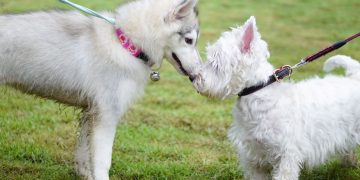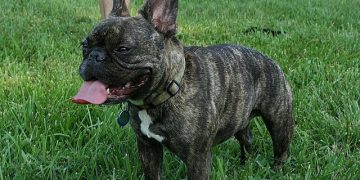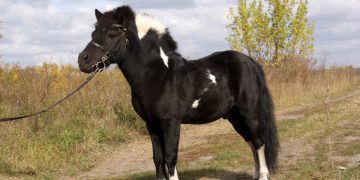The Alter Real horse breed, originating from Portugal, is renowned for its elegance, power, and impressive performances in classical dressage. With a rich heritage and close ties to the Portuguese royal family, the Alter Real horse represents centuries of selective breeding and dedication to preserving its unique qualities. In this article, we’ll delve into the history, characteristics, uses, and conservation efforts surrounding the Alter Real horse, a symbol of Portugal’s equestrian legacy.
Table of Contents
- Introduction to the Alter Real Horse
- Historical Background of the Alter Real Breed
- Physical Characteristics of the Alter Real Horse
- Temperament and Personality
- Primary Uses of the Alter Real Horse
- Breeding and Lineage
- Conservation and Preservation Efforts
- Conclusion: The Significance of the Alter Real Horse
1. Introduction to the Alter Real Horse
The Alter Real horse, named after the town of Alter do Chão in Portugal, is a breed that was specifically developed for royal use in the Portuguese court. Known for their graceful movement, strength, and keen intelligence, Alter Real horses have a distinguished reputation in classical dressage and high-level equestrian performances.
Unlike other Lusitano horses, which are known for their versatility, the Alter Real is particularly prized for its aptitude in the “Haute École” style of classical dressage, where intricate, controlled movements are showcased. This unique specialization has made the Alter Real a favorite at Portugal’s National School of Equestrian Art and within other classical riding institutions worldwide.
2. Historical Background of the Alter Real Breed
The history of the Alter Real horse dates back to 1748 when the breed was established by the Portuguese royal family. The breed was developed to serve the royal court as a refined riding horse, combining the elegance, agility, and intelligence needed for ceremonial duties and classical dressage.
Key Historical Milestones:
- Founding of Coudelaria de Alter: The Alter Real stud farm, Coudelaria de Alter, was founded in the town of Alter do Chão in Portugal, primarily using Andalusian stock imported from Spain. The farm remains operational and is responsible for maintaining the purity of the breed to this day.
- Challenges During the Napoleonic Wars: The breed nearly went extinct during the Napoleonic Wars, as Portugal faced turmoil, and many Alter Real horses were lost or dispersed.
- Re-establishment of the Breed: By the 19th century, efforts were made to revive the breed. Spanish Andalusian and Arab bloodlines were introduced, although they temporarily affected the breed’s characteristics. In the 20th century, selective breeding aimed to restore the original traits of the Alter Real, focusing on the refined, baroque appearance and classical dressage qualities.
Today, the Alter Real breed is recognized as a unique and treasured equine line, nurtured and preserved at the original stud farm under the care of the Portuguese government.
3. Physical Characteristics of the Alter Real Horse
Alter Real horses are noted for their striking appearance, which includes both physical strength and a refined, noble bearing suited to formal equestrian displays.
- Size and Build: Alter Reals are generally medium-sized, standing between 15.2 and 16 hands (approximately 155 to 163 cm). They have a compact, muscular build with a short, strong back and well-defined withers.
- Head and Neck: The head is elegant and finely chiseled, featuring expressive eyes and a straight or slightly convex profile. They have a long, arched neck with a pronounced crest, contributing to their stately presence.
- Coat and Color: Alter Real horses are typically bay, though black or dark brown horses can occasionally be found. Their coats are sleek, with minimal white markings, and are carefully groomed to enhance their natural shine.
- Mane and Tail: The mane and tail are thick, full, and often left to grow long, enhancing their dramatic appearance in dressage performances.
This physical conformation, combined with their expressive movement, makes Alter Reals particularly suited for high-level dressage.
4. Temperament and Personality
Alter Real horses are known for their intelligence, sensitivity, and loyalty. They are eager learners with a natural aptitude for dressage, responding well to structured training and forming strong bonds with their handlers. However, they are also known for their spirited nature, which requires experienced and gentle handling.
- Trainability: Alter Real horses are highly trainable, excelling in movements such as piaffe, passage, and pirouettes. Their intelligence allows them to master complex movements, but they need consistent training to maintain focus and discipline.
- Sensitivity: This breed is sensitive to their environment and handler cues, making them highly responsive in dressage performances.
- Loyalty and Affection: Alter Real horses are known to be loyal and even affectionate with handlers they trust, which can make them especially rewarding for riders who appreciate a close bond with their horse.
The combination of these personality traits has made the Alter Real a prized mount in classical dressage and other refined equestrian settings.
5. Primary Uses of the Alter Real Horse
While many horses are bred for versatility, the Alter Real horse has been honed specifically for certain refined equestrian practices.
- Classical Dressage: Alter Real horses are primarily used for classical dressage, where their movements and conformation are ideally suited for the demands of this art form. Known for their skill in “Haute École” dressage, they are adept at complex movements like the piaffe, passage, and airs above the ground.
- Portuguese Equestrian Art: At Portugal’s National School of Equestrian Art, Alter Reals are featured in performances, often showcasing traditional Portuguese dressage. Their unique skills and striking appearance make them a focal point in these prestigious displays.
- Ceremonial and Parades: Due to their refined presence and noble appearance, Alter Real horses are frequently used in ceremonial roles, appearing in national celebrations, parades, and events associated with Portugal’s royal and equestrian heritage.
6. Breeding and Lineage
The Alter Real breed is maintained through selective breeding practices at Coudelaria de Alter, one of the oldest and most respected stud farms in Portugal. The farm is dedicated to preserving the purity and traditional qualities of the breed, carefully selecting horses that embody the distinct characteristics of the Alter Real.
Key Breeding Practices:
- Selective Lineage: Breeding is highly selective, focusing on traits like intelligence, elegance, and the specific physical conformation suited for classical dressage.
- Strict Regulations: The Portuguese government oversees the preservation of the Alter Real breed, ensuring that the bloodline remains pure and the horses maintain their characteristic qualities.
- Limited Crossbreeding: While there were historical periods of crossbreeding with Andalusians and Arabians, modern breeding efforts strive to maintain the original characteristics of the Alter Real.
Thanks to these dedicated breeding practices, the Alter Real breed continues to thrive, retaining the unique attributes that set it apart from other Iberian breeds.
7. Conservation and Preservation Efforts
Despite its historical significance, the Alter Real breed has faced challenges over the centuries. Conservation efforts are now focused on preserving the breed’s genetic purity and promoting its cultural importance.
- National Recognition: The Portuguese government recognizes the Alter Real as a national treasure, supporting conservation efforts and promoting its role in Portuguese heritage.
- Coudelaria de Alter: The Alter Real stud farm serves as the primary breeding and conservation center for the breed. In addition to breeding, the farm also educates the public about the importance of the Alter Real horse.
- Promotion in Equestrian Art: By featuring Alter Real horses in the National School of Equestrian Art, Portugal celebrates the breed’s unique talents and fosters international recognition. This promotion has attracted attention from dressage enthusiasts worldwide, supporting conservation through global interest.
The combination of government support, dedicated breeding programs, and cultural promotion has been instrumental in safeguarding the future of the Alter Real horse.
8. Conclusion: The Significance of the Alter Real Horse
The Alter Real horse is not only an equine breed but a cherished symbol of Portuguese culture and history. With roots that stretch back to Portugal’s royal courts, the breed embodies elegance, intelligence, and resilience. Through ongoing conservation efforts and public appreciation, the Alter Real horse continues to thrive as an emblem of Portugal’s classical equestrian tradition.
Whether in the ceremonial settings of Portugal’s National School of Equestrian Art or the grand performances of classical dressage, the Alter Real horse commands respect and admiration. Its legacy is preserved through generations of dedicated breeders and equestrians who recognize the breed’s unmatched qualities and contributions to Portugal’s heritage.























